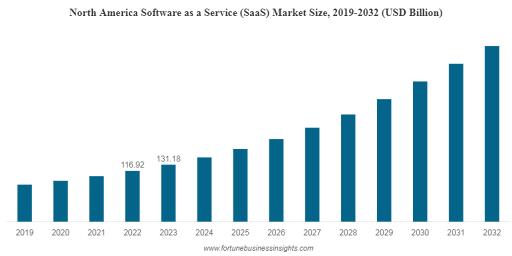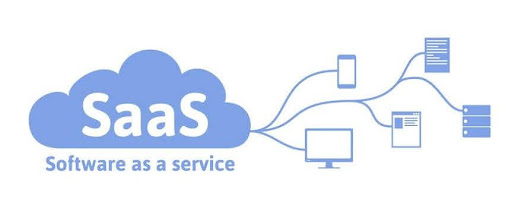Given the rapid advancement in the modern SaaS world, mobile apps are no longer a luxury—they’re a necessity. They play a crucial role in delivering smooth user experiences, boosting engagement, and remaining competitive. But here’s the thing: building a mobile app is never about just writing code.
It’s about developing a product that matches perfectly with your SaaS objectives and delights your users. And the first step? Hiring a mobile app developer who understands your vision. Yet, many SaaS companies stumble.
Let’s look at the common hiring mistakes that can derail your mobile app ambitions and learn how you can avoid them.
Common Hiring Mistakes When Looking for Mobile App Developers for SaaS

Mobile users spend 88% of their time on mobile apps, showing how crucial it is to get the app design right. Let us look at the significant mistakes when hiring a mobile app developer so you avoid them!
Mistake #1: Focusing Solely on Cost Over Quality
You’ve got a budget—fair enough. But when cost becomes your only lens, you risk compromising on quality. Here’s why this approach can backfire:
Cheap Can Be Expensive:
- Developers charging rock-bottom rates might lack experience or cut corners.
- Poorly coded apps lead to performance issues, crashes, and user churn.
- Data shows that 88% of users abandon an app due to bugs or glitches. Fixing these later can cost more than getting it right initially.
Balancing Budget with Skill:
- Instead of hunting for the cheapest option, look for value. A slightly higher investment in hiring skilled and remote mobile app developers for SaaS can save headaches later.
- Use platforms like Uplers to find pre-vetted developers, ensuring you get quality without the guesswork.
iOS vs. Android Consideration:
- Developing for iOS tends to be costlier, given Apple’s strict guidelines and higher design standards.
- Android development, while broader due to device diversity, demands rigorous testing across multiple models.
Mistake #2: Ignoring Platform-Specific Expertise
A mobile app that feels like a fish out of water on its platform? A disaster waiting to happen.
iOS vs. Android App Development:
- iOS focuses on streamlined, intuitive designs. Android emphasizes flexibility and device adaptability.
- Developers require an extensive understanding of platform guidelines, like Apple’s Human Interface Guidelines or Google’s Material Design.
Native vs. Cross-Platform Development:
- Native apps (Swift for iOS, Kotlin for Android) offer powerful performance and user experience.
- Cross-platform solutions (Flutter, React Native) are budget-friendly but may not fully leverage platform-specific features.
The User Experience Factor:
- Lack of platform knowledge results in mismatched UI/UX, frustrating users.
- Research shows that 76% of users uninstall apps due to a poor experience.
Mistake #3: Neglecting to Assess Technical Skills Thoroughly

A developer’s resume might look impressive, but can they deliver?
Key Skills to Test:
- For iOS: Swift, SwiftUI, Objective-C, Xcode, and familiarity with iOS-specific APIs.
- For Android: Kotlin, Java, Jetpack Compose, Android Studio, and Google APIs.
Beyond Basics:
- Check for backend integration expertise—how well can they link your app with SaaS APIs?
- Test knowledge of emerging tools like SwiftUI for iOS or Jetpack Compose for Android.
Practical Tests:
- Assign real-world tasks like creating a small feature or debugging a simulated issue.
- Emphasize problem-solving over theoretical knowledge.
Mistake #4: Overlooking Portfolio and Past Projects
When hiring mobile app developers for SaaS, if their past work doesn’t align with your expectations, it’s time to reconsider your decision.
What to Look for in Portfolios:
- Apps that showcase clean UI, responsive design, and platform adherence.
- Metrics like app ratings, reviews, and downloads give insights into user satisfaction.
Deep Dive:
- Ask for specific contributions—what features did they build? What challenges did they overcome?
- Evaluate apps on speed, navigation ease, and integration of SaaS-specific features like subscription management.
Mistake #5: Not Prioritizing Communication and Collaboration
Building a SaaS app isn’t a solo endeavor—it’s teamwork.
Communication Gaps:
- Miscommunication, especially in remote or hybrid setups, can derail timelines and expectations.
- Studies show that poor communication costs businesses $62.4 million annually.
Collaboration Essentials:
- Developers must work seamlessly with designers, product managers, and other stakeholders.
- Cross-team collaboration ensures that SaaS-specific features like payment gateways or user analytics are implemented smoothly.
Tools to Use:
- Slack for real-time discussions.
- Jira or Trello for project management.
- Figma for design collaborations between iOS and Android teams.
Mistake #6: Not Verifying Familiarity with SaaS Models
A mobile app for SaaS is not just another app—it’s a gateway to your business.
Unique SaaS Requirements:
- Features like subscription tiers, user scalability, and secure payment handling demand a nuanced approach.
- Developers must understand the intricacies of in-app purchases (iOS) or Android’s Play Store compliance.
Scalability Matters:
- SaaS apps need to handle a growing user base without performance dips.
- Familiarity with cloud services like AWS, Firebase, or Azure can be a game-changer.
Mistake #7: Neglecting to Test for Problem-Solving and Debugging Skills
Even the most polished code will encounter bugs.
Debugging iOS Apps:
- Issues like memory leaks or UI glitches are common.
- Developers must use tools like Instruments to analyze performance and fix issues.
Common Android Challenges:
- Device fragmentation is a significant hurdle—your app must run smoothly on everything from budget phones to high-end models.
- Tools like Firebase Crashlytics help diagnose and fix crashes effectively.
Problem-Solving Over Code Writing:
- The real test lies in how a developer approaches unexpected challenges.
- Use scenario-based interviews to evaluate critical thinking skills.
Mistake #8: Failing to Plan for Post-Launch Support and Maintenance
Your app’s launch is just the beginning.
Long-Term Maintenance:
- Regular updates to align with iOS and Android OS upgrades.
- Handling evolving App Store/Google Play policies to avoid app removal.
Hiring for the Long Haul:
- Developers with a history of post-launch support ensure your app remains relevant and bug-free.
- Plan for iterative updates to improve user experience based on feedback.
Conclusion: Avoiding Pitfalls in Hiring Mobile App Developers
Hiring the right developer is like finding the perfect co-pilot for your SaaS journey. Missteps like focusing solely on cost, ignoring platform expertise, or overlooking communication can cost you time, money, and user trust. On the other hand, a thoughtful hiring process ensures that you’d avoid common hiring mistakes and create a SaaS experience users love.
Final Tips:
- Invest in developers who align with your SaaS goals.
- Test thoroughly, from skills to problem-solving aptitude.
- Prioritize long-term collaboration and platform-specific expertise.
Avoid the common hiring mistakes we just mentioned and ensure your next Hire Mobile App Developers decision is one you’ll never regret.














